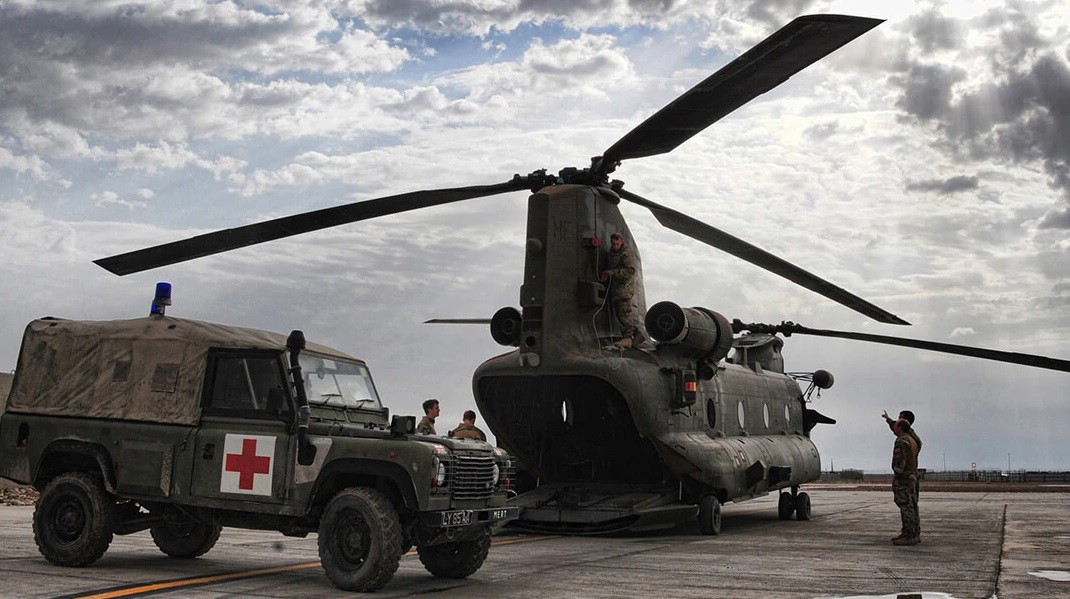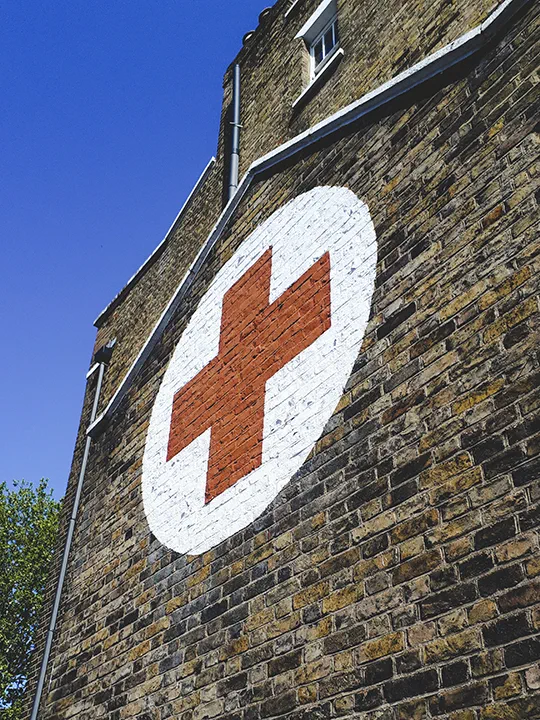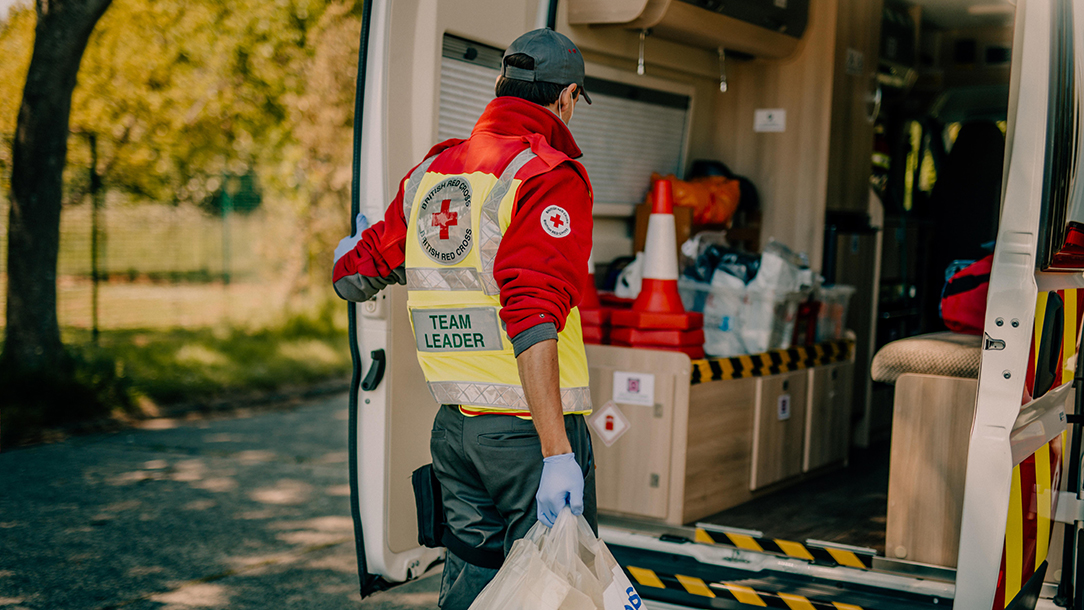“The Red Cross emblem remains as relevant today as ever in saving lives”
The emblem of the Red Cross is one of the most iconic in the world. Here, head of international law Michael Meyer reflects on what the emblem, along with our motto, means to the organisation today
Last updated 19 April 2023
A universal symbol of hope, protection and humanity
The red cross emblem is an international symbol of neutrality and protection during armed conflicts. Used by military medical personnel and authorised humanitarian workers to safeguard the wounded and sick on the battlefield, it remains as relevant today as ever in saving lives.
The emblem also indicates an association with the Red Cross movement, and both uses signify comfort and hope, which has been evidenced recently during the UK and global response to the Covid-19 pandemic.

The use of the red cross emblem by UK Defence Medical Services
From the World Wars, the Aberfan disaster to the Indian Ocean Tsunami and the Syrian conflict, the emblem is there, providing protection, and conveying trust and reassurance. The British Red Cross' use of the emblem has been a source of unity and universality throughout its 150 years. It is a connection between peoples, and remains a signal for a better present and future.
"Through humanity to peace"
The humanitarian work of the Red Cross has always contributed to peace. Since its foundation in 1863, the movement has tried to limit by its actions and through the provisions of international humanitarian law, the horrors of war.
The work of the Red Cross and Red Crescent, in time of peace as in time of armed conflict, helps - directly or indirectly - to reduce tensions and defuse the causes of conflicts.

The emblem on our Resource Centre for refugees in East London
The two mottoes of the movement – "inter arma caritas" ("In war, charity") and "per humanitatem ad pacem" ("Through humanity to peace") – express the ideals of the Red Cross and Red Crescent. The latter is more recent and broader. Both are contained in the Preamble to the Statutes (constitution) of the movement.
For our movement, lasting peace "is not simply the absence of war, but is a dynamic process of cooperation among all States and peoples, cooperation founded on respect for freedom, independence, national sovereignty, equality, human rights, as well as on a fair and equitable distribution of resources to meet the needs of peoples."
National Societies, the International Committee of the Red Cross and the International Federation promote peace through their humanitarian action.
Their specific contribution is restricted by the Fundamental Principles, notably, the Principle of Neutrality. Respect for the Fundamental Principles permits the movement to contribute to peace while maintaining its own unity and possibility for long-term action.
The guiding Principle of Humanity ends by stating that the movement "promotes mutual understanding, friendship, cooperation and lasting peace amongst all peoples."

The emblem seen on the uniform of a volunteer delivering food during the Covid-19 pandemic
As a National Society, the British Red Cross is open to people from all backgrounds and sections of the UK population. All volunteers and staff work together to carry out a common humanitarian task. By dedicating ourselves to promoting the dignity of all people and respecting humanitarian values, we can make a personal commitment to true peace in our country and worldwide.
Such unity is needed in our world now more than ever.
To celebrate the 150th anniversary of the British Red Cross, the Royal Mint has launched a commemorative £5 coin dedicated to the charity. Designed by Henry Gray, the coin bears both our famous red cross emblem, and a current motto of the Red Cross Movement, ‘PER HUMANITATEM AD PACEM’, which translates to ‘Through humanity to peace’. To join us in celebrating 150 years of kindness, you can purchase the Royal Mint coin here.
Learn more about the history of our movement:
- 150 years of British Red Cross volunteers
- The beginnings of the British Red Cross
- The Red Cross and the NHS: a history of helping
Let's make sure no one is left behind
Please help us to make sure no one falls through the cracks during the Covid-19 pandemic. Your donation could change someone’s life.
DONATE